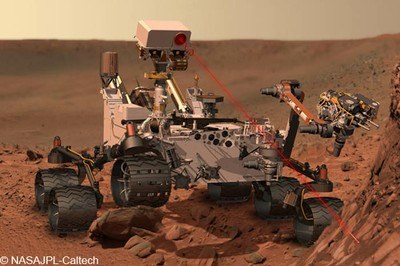Curiosity - The Next Mars Rover
Mar 13, 2012
An unmanned Atlas rocket blasted off from Florida on November 26 launching a NASA Rover toward Mars. The car-sized rover, nicknamed Curiosity, is the best equipped vehicle ever sent to the red planet with a technology developed by the School of Telecommunications Engineering of Barcelona (ETSETB - UPC.BarcelonaTech).
If everything goes smoothly, the Mars Science Laboratoty Mission's Curiosity, is expected to touch down on August 6, 2012. The aim of the MSL mission is to study the surface of Mars using instruments hosted on the mini-Cooper-sized rover. Among these is an environmental monitoring station called REMS (Rover Environmental Monitoring Station), the Spanish contribution to the mission intended to measure the air and soil temperature, atmospheric pressure, humidity and ultraviolet radiation, as well as speed and wind direction.
To measure the wind, the system developed by ETSETB researchers is based on the physical principle known as hot-wire anemometer. The traditional method for doing so, successfully used before, is to heat a platinum wire (commonly used in electronics because its resistance is sensitive to temperature) using an electric current and measuring the temperature change when the wind cools. It is precisely the difference in temperature what allows to know the wind speed.
But more than the measurement method, the fundamental difference implemented by the UPC.BarcelonaTech team over other solutions is the use of several volumes at constant temperature. This way the sensor is more energy efficient than the existing so far.
+ Info
To measure the wind, the system developed by ETSETB researchers is based on the physical principle known as hot-wire anemometer. The traditional method for doing so, successfully used before, is to heat a platinum wire (commonly used in electronics because its resistance is sensitive to temperature) using an electric current and measuring the temperature change when the wind cools. It is precisely the difference in temperature what allows to know the wind speed.
But more than the measurement method, the fundamental difference implemented by the UPC.BarcelonaTech team over other solutions is the use of several volumes at constant temperature. This way the sensor is more energy efficient than the existing so far.
+ Info

Share: